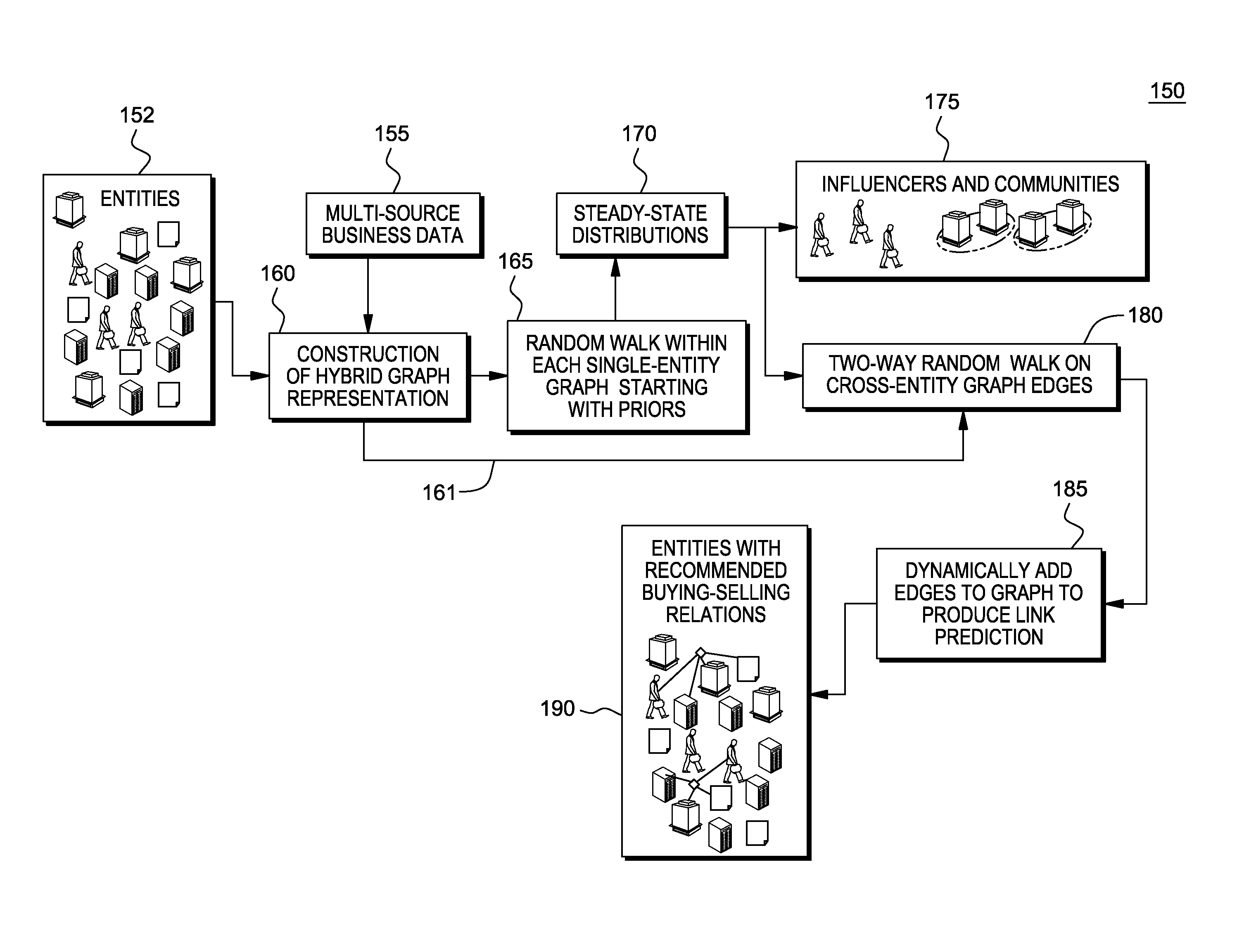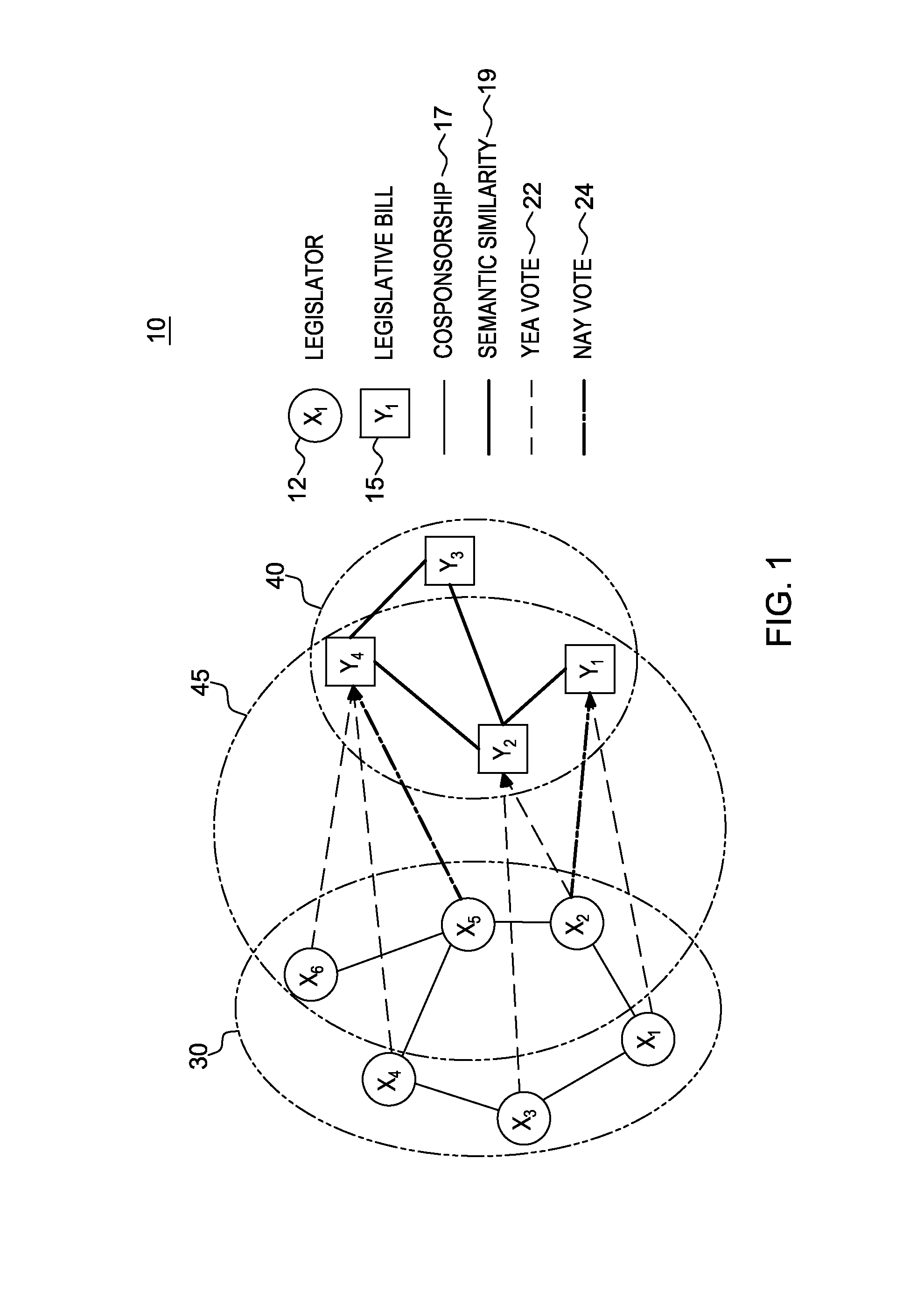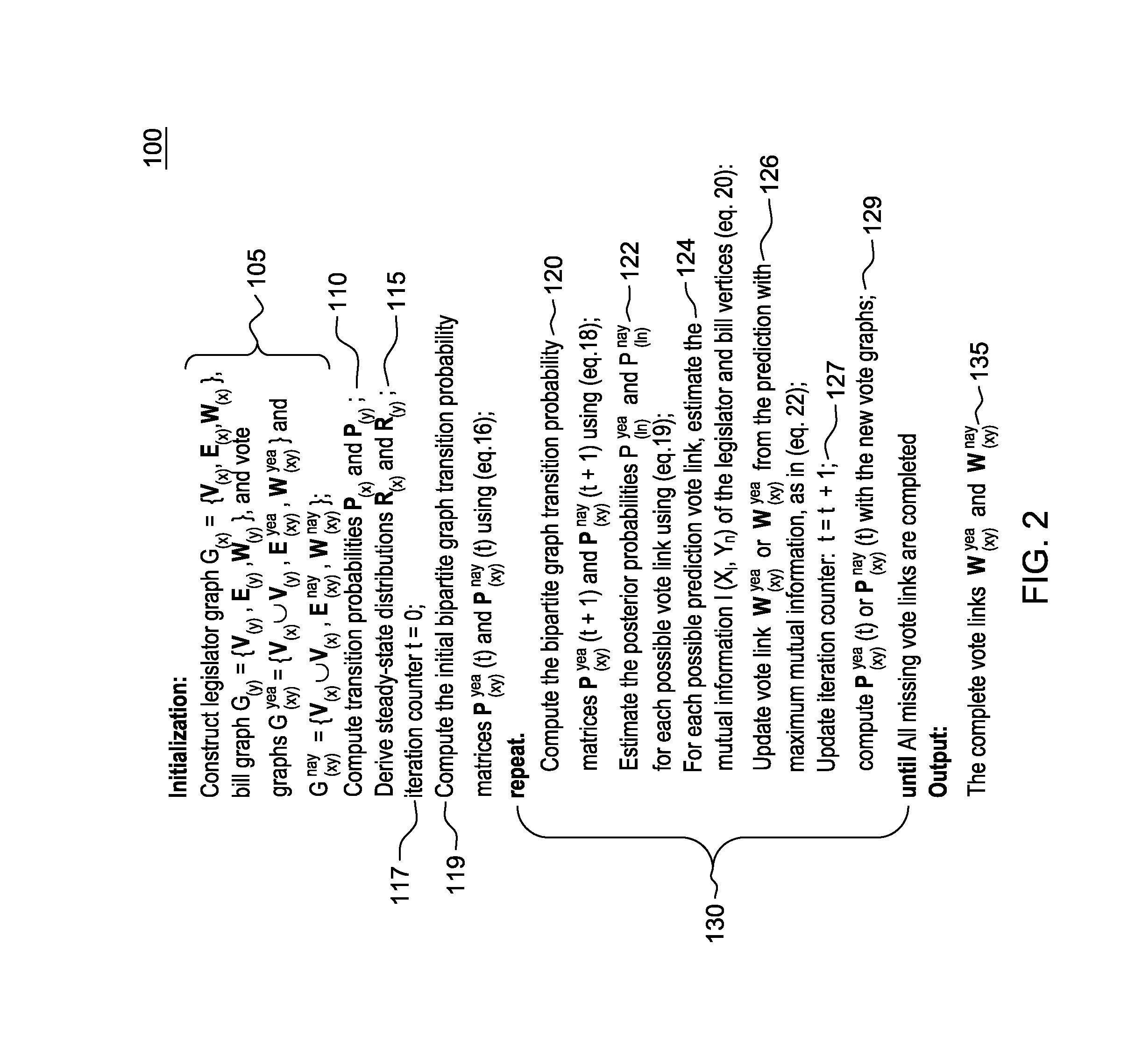Predictive and descriptive analysis on relations graphs with heterogeneous entities
a graph and heterogeneous technology, applied in the field of prediction analysis and building predictive models, can solve problems such as information loss, unsatisfactory prediction accuracy, and inability to handle relational information, and achieve the effect of avoiding information loss
- Summary
- Abstract
- Description
- Claims
- Application Information
AI Technical Summary
Benefits of technology
Problems solved by technology
Method used
Image
Examples
Embodiment Construction
[0017]A system, method and computer program product for providing a random walk model with heterogeneous graphs to leverage multiple source data and accomplish challenging prediction tasks, is provided. The system, method and computer program product is applicable to any application using predictive analytics.
[0018]For purposes of description herein, the novel random walk model with heterogeneous graphs is described herein in the context of a political science application, namely, the build of a random walk-based model to predict a legislators' votes on a set of proposed laws or “bills”. The principles of the novel random walk model with heterogeneous graphs as described herein is applicable to many other applications that could benefit from using predictive analytics, e.g., managing buying-selling relations across hybrid networks.
[0019]Humanistic and social studies, including anthropology, criminology, marketing, sociology, and urban planning are increasingly turning to data-driven...
PUM
 Login to View More
Login to View More Abstract
Description
Claims
Application Information
 Login to View More
Login to View More - R&D
- Intellectual Property
- Life Sciences
- Materials
- Tech Scout
- Unparalleled Data Quality
- Higher Quality Content
- 60% Fewer Hallucinations
Browse by: Latest US Patents, China's latest patents, Technical Efficacy Thesaurus, Application Domain, Technology Topic, Popular Technical Reports.
© 2025 PatSnap. All rights reserved.Legal|Privacy policy|Modern Slavery Act Transparency Statement|Sitemap|About US| Contact US: help@patsnap.com



